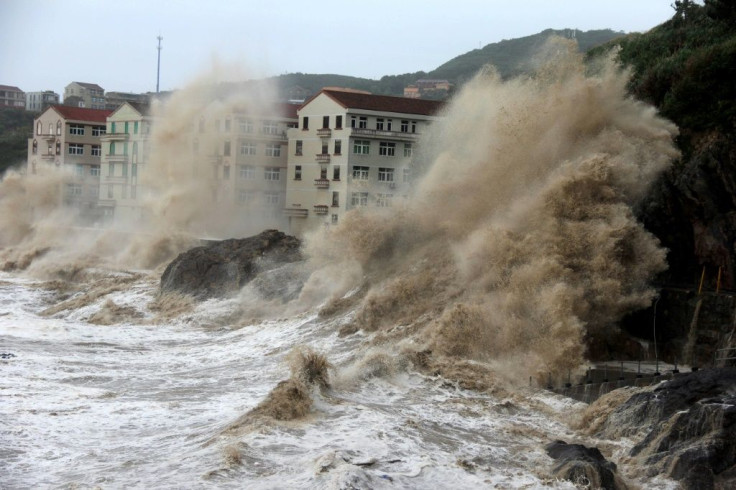Forever Solutions For Forever Chemicals

Contaminants like pathogens, microplastics and “forever chemicals,” or per- and polyfluoroalkyl substances (PFAS), are hazardous to the environment and human health and have been present since the 1950s. Yet very little meaningful action has been taken to control their use and proper disposal. These man-made substances end up in landfills or wastewater treatment facilities but never truly break down due to their unique chemical properties. This problem has gone largely unaddressed until recently, as new research showcased the ubiquity of contaminants on farms, in human bodies, in water sources and in the air.
We need to take advantage of the momentum and awareness that consumer advocacy groups, researchers and local leaders have created. Now is the time to establish goal-oriented educational campaigns, business models and policies that reimagine our global relationship with waste and pollution.
Let’s Talk About Waste
Differences in lifestyle, culture and geography create variations in how countries and regions manage waste. But even the most mindful and environmentally conscious consumers do not consider where food or human waste goes once it has been disposed of. The pervasive and enduring nature of contaminants like PFAS highlights a harsh reality as current waste management methods are inherently flawed. With landfills, incinerators and conventional wastewater plants, waste is merely relocated, transformed into a new state or transferred from one environmental compartment to another (e.g. air, land, water, food).
Changing global approaches to waste management is a tall order and must start with acknowledging the problem head-on. For decades, rather than confront the flaws of existing processes, we’ve buried the issue (literally, in many cases).
Rather than fall back on legacy approaches, we must look to emerging waste management technologies that leverage waste as a resource for energy, water and minerals. They must also demonstrate the ability to eliminate all traces of contaminants during treatment. Many of these technologies rely on physical processes, like supercritical water oxidation, but barriers to widespread adoption still exist. Awareness of these solutions and broader efforts to deploy and refine them for global, scalable adoption is the first step. We cannot squander this moment when the public eye is trained on the threat of PFAS and other contaminants of emerging concern.
The Water Awareness Wave
Environmental and consumer advocacy groups are driving a groundswell of action against the threats of existing and emerging contaminants. Naturally, many corporations, municipalities, government agencies and nongovernmental organizations are reacting to public pressure and looking outward for opportunities to get involved.
The Biden-Harris Administration announced a plan to combat PFAS in October 2021, and the U.S. EPA is already delivering on commitments made through that effort. Elsewhere, states and regions are introducing bans on the use of these substances in food packaging and manufacturing to mitigate future pollution. We can expect to see similar regulations and pledges continue to come down in public and private sectors around the world.
Driving widespread change in an industry as sprawling and established as water and waste management seems nearly impossible. We must reexamine established solutions we’ve deemed “good enough.” Relying on landfills, incineration and other approaches might get waste out of sight but sewage, sludge and wastewaters are still capable of damaging the environment and human lives even when they’ve been relocated or processed. With major funds being put aside to address PFAS and other contaminants, we cannot overlook investment opportunities within emerging technologies to eradicate these threats and unlock new value streams and business models through resource recovery.
Creating a World Without Waste
We all create waste. We all must play a part in mitigating its impacts on our world. For entities that are directly or even indirectly contributing to this crisis, taking action in measurable, transparent ways is crucial. Hold yourself, industry partners and peers accountable. Expanded corporate social responsibility practices and formal ESG strategies represent an opportunity to lead the fight against forever chemicals, not to mention the emotional implications of publicly taking steps to create a safer world for future generations.
Institutions, corporate leaders and consumers must look to companies and experts developing technologies with the potential to tackle this major threat to the climate and public health. These innovators already have the solutions and understanding to approach this challenge. What many of them lack is support and the proper channels for taking their ideas mainstream. Investing in and promoting new technologies in this space is not only the environmentally and socially responsible thing to do, it can be a lucrative tactic for global companies.
Think about the clean energy or the EV industry even a decade ago. Renewable generation technologies were more expensive than their fossil fuel-based alternatives. But the broader implications of climate change, coupled with government subsidies to drive commercialization quickly changed things and made inaction feel nearly impossible. It is no wonder we have now arrived at a point where the value of clean energy technologies for the climate and global economy almost needs no explanation. When innovators in an emerging industry receive support from public and private entities, new opportunities to collaborate, commercialize solutions and address big picture challenges will emerge.
To eliminate threats like PFAS and establish a roadmap for mitigating future contaminants of emerging concern, we must support ideologies and technologies that modernize how we think about and handle waste. Consumers, corporations and government entities are beginning to acknowledge this challenge and the role they have played in perpetuating it. Now we must take action by prioritizing policies, business models and awareness campaigns that will boost man-made solutions to this man-made crisis.
(Kobe Nagar is the CEO of 374Water, a cleantech social impact company that has found a way to eliminate PFAS, microplastics, pharmaceuticals and other pollutants from waste using supercritical water oxidation technology.)

Photo: AFP / -





















